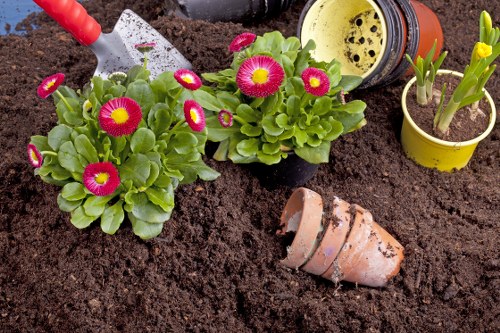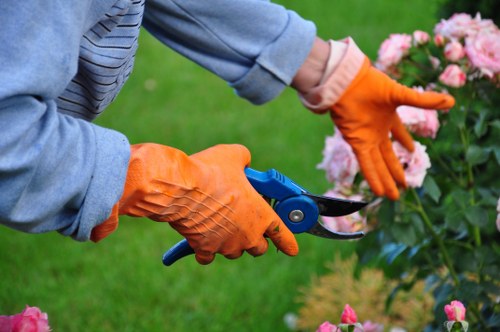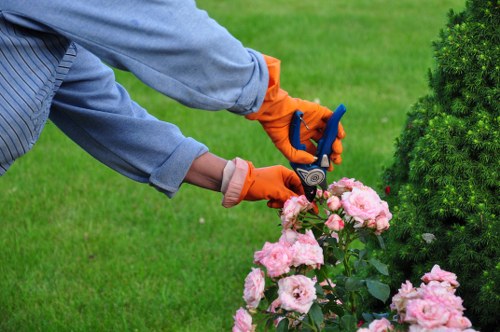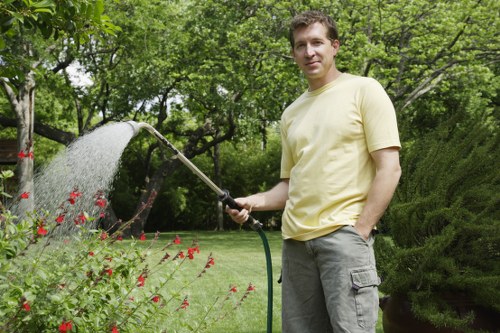Lawn Mowing Poplar

Maintaining a well-mowed lawn is essential for the beauty and health of your home’s outdoor space. In Poplar, where the climate and soil conditions present unique challenges, effective lawn mowing practices can make all the difference. Whether you're a homeowner seeking to enhance curb appeal or a business owner aiming for a professional look, understanding the best lawn mowing techniques in Poplar is crucial.
Regular mowing not only keeps your lawn looking neat but also promotes healthy grass growth. By cutting the grass at the right height and frequency, you can prevent weeds, reduce pest infestations, and encourage a lush, green lawn. In Poplar, where summers can be hot and winters cold, adapting your mowing schedule to the changing seasons is vital.
Choosing the right equipment is another key factor in maintaining a healthy lawn. From traditional push mowers to more advanced electric and gas-powered models, selecting the appropriate mower can impact both the efficiency and effectiveness of your lawn care routine.
Choosing the Right Lawn Mower

Selecting the best lawn mower for Poplar’s specific conditions involves considering several factors. The size of your lawn, the type of grass you have, and the terrain of your property all play significant roles in determining the most suitable mower.
For smaller lawns, a push mower might be sufficient, offering ease of use and affordability. However, for larger areas, a riding mower or a self-propelled model can save time and reduce physical strain. Additionally, consider the power source—electric mowers are quieter and more environmentally friendly, while gas-powered mowers generally offer more power for tough mowing conditions.
Another important aspect is the cutting width. A wider cutting deck can mow larger areas more quickly, but it may be bulkier and harder to maneuver in tight spaces. Balancing cutting efficiency with maneuverability will help you choose a mower that meets your specific needs.
Optimal Mowing Practices

Implementing optimal mowing practices can significantly enhance the health and appearance of your lawn. One fundamental rule is to never remove more than one-third of the grass blade’s height in a single mowing session. Cutting too short can stress the grass, making it more susceptible to weeds and diseases.
Mowing frequency is another critical factor. During the growing season, typically spring and summer, your lawn may require mowing once a week. In cooler months, reduce the frequency to prevent overcutting and allow the grass to recover. Additionally, varying your mowing pattern each time you mow can prevent the soil from becoming compacted and help grass blades grow in different directions, promoting a healthier lawn.
It’s also essential to keep your mower blades sharp. Dull blades tear the grass rather than cutting it cleanly, leading to ragged edges that are prone to disease. Regular maintenance and blade sharpening can ensure a precise cut and promote healthier grass growth.
Seasonal Lawn Care Tips

Adapting your lawn mowing routine to the seasons is key to maintaining a vibrant lawn in Poplar. In the spring, as the grass begins to grow rapidly, increase mowing frequency and gradually lower the cutting height to encourage dense growth.
During the summer months, high temperatures and dry conditions can stress your lawn. Mow less frequently and raise the mower height to provide shade to the roots, helping the grass retain moisture. Watering deeply and infrequently rather than shallow, frequent watering can also promote deeper root growth and drought resistance.
In the fall, prepare your lawn for the colder months by continuing regular mowing until growth slows. Aerating the soil and applying a fall fertilizer can strengthen the grass, preparing it for winter dormancy. Avoid mowing when the grass is wet to prevent clumping and damage.
Local Weather Considerations

Poplar’s climate plays a significant role in lawn care strategies. With its hot summers and cold winters, selecting grass varieties that can thrive under these conditions is important. Warm-season grasses like Bermuda or Zoysia are well-suited for the heat, while cool-season grasses such as fescue or perennial ryegrass can withstand cooler temperatures.
Understanding local weather patterns helps in scheduling mowing and other lawn care activities. For instance, during periods of heavy rainfall, it may be necessary to pause mowing to prevent soil erosion and grass damage. Similarly, during prolonged dry spells, adjusting watering schedules to maintain lawn health is essential.
Additionally, monitoring for pests and diseases prevalent in Poplar’s climate can help in taking timely actions to protect your lawn. Integrated pest management practices, including proper mowing, watering, and fertilization, can minimize the need for chemical interventions.
Essential Tools and Accessories

Beyond the lawn mower, several tools and accessories can enhance your lawn care routine in Poplar. A quality rake is essential for removing leaves and debris, promoting healthy grass growth by allowing better air circulation and sunlight penetration.
Another important tool is a lawn aerator, which helps to relieve soil compaction and improve root development. Aerating your lawn periodically, especially before the growing season, can lead to a healthier and more resilient lawn.
Additionally, incorporating a trimmer or edger can help maintain clean lines along sidewalks, driveways, and flower beds, giving your lawn a polished and professional appearance. These tools complement your mower, ensuring that every part of your lawn receives proper care.
Maintaining Lawn Health

A healthy lawn is the result of consistent care and attention to various factors such as mowing, watering, fertilizing, and pest control. Integrating these elements into your lawn care routine can help you achieve a lush and vibrant yard.
Proper fertilization provides essential nutrients that support grass growth and resilience. Choosing the right fertilizer based on your grass type and soil conditions is important. Conducting a soil test can help determine nutrient deficiencies and guide your fertilization strategy.
Weed control is also crucial for maintaining lawn health. Regular mowing at the appropriate height can naturally suppress weeds by shading the soil and limiting their growth. For persistent weeds, selective herbicides can be used, but it’s important to apply them carefully to avoid damaging the grass.
Eco-Friendly Lawn Care

Embracing eco-friendly lawn care practices not only benefits the environment but also contributes to the long-term health of your lawn. Using electric mowers instead of gas-powered ones reduces carbon emissions and noise pollution, creating a quieter and cleaner neighborhood.
Composting grass clippings is another sustainable practice. Instead of disposing of the clippings, you can recycle them as natural fertilizer, returning valuable nutrients to the soil and reducing waste.
Water conservation is also important. Implementing irrigation systems that minimize water waste, such as drip irrigation or rainwater harvesting, ensures that your lawn receives adequate moisture without overuse. These practices help preserve local water resources and maintain a healthy lawn.
Hiring Professional Lawn Care Services

For those who prefer to leave lawn care to the experts, hiring professional lawn mowing services in Poplar can be a great option. Professionals bring expertise and equipment that can handle even the most challenging lawn conditions, ensuring your yard remains in top shape year-round.
When choosing a lawn care service, consider factors such as experience, reputation, and the range of services offered. A reliable service provider will offer personalized solutions tailored to your lawn’s specific needs, whether it’s regular mowing, landscaping, or seasonal treatments.
Investing in professional services can save you time and effort, allowing you to enjoy a beautiful lawn without the hassle of maintenance. Additionally, professionals can offer valuable advice and insights to help you make informed decisions about your lawn care practices.
Local Relevance: Serving Areas Near Poplar

Poplar is surrounded by several nearby areas that share similar lawn care needs. Understanding the unique features of these areas can help tailor lawn mowing services to meet specific requirements.
- Elmwood: Just 5 miles from Poplar, Elmwood features hilly terrains that require specialized mowing equipment.
- Maple Grove: Located 7 miles away, Maple Grove’s sandy soil affects grass growth, necessitating unique fertilization techniques.
- Pinehurst: Only 3 miles from Poplar, Pinehurst experiences higher rainfall, requiring efficient drainage solutions in lawn care.
- Brookside: Situated 10 miles from Poplar, Brookside has larger properties where riding mowers are recommended.
- Greenfield: 8 miles away, Greenfield is known for its dense tree coverage, making a trimmer essential for lawn maintenance.
- Riverside: Located 12 miles from Poplar, Riverside’s proximity to the river influences soil moisture levels in lawns.
- Sunnyvale: 6 miles distant, Sunnyvale’s intense sun exposure requires choosing drought-resistant grass varieties.
- Oak Park: Just 4 miles away, Oak Park has well-established lawns needing careful mowing to preserve mature grass.
- Lakeside: 9 miles from Poplar, Lakeside’s lawns benefit from regular aeration due to heavy clay soils.
- Hillcrest: 11 miles away, Hillcrest’s sloped lawns require mowers with extra power and stability.
Conclusion
Maintaining a pristine lawn in Poplar involves a combination of choosing the right equipment, implementing effective mowing practices, and adapting to seasonal changes. By understanding the local climate and soil conditions, homeowners and business owners can develop a lawn care routine that promotes healthy, vibrant grass.
Whether you opt for DIY lawn care or hire professional services, prioritizing regular maintenance and eco-friendly practices will ensure your lawn remains a beautiful and sustainable feature of your property. Embracing these strategies will not only enhance the aesthetic appeal of your home but also contribute to the overall well-being of the local environment.
Investing time and resources into proper lawn mowing and care in Poplar will yield long-term benefits, creating a welcoming outdoor space for family, friends, and neighbors to enjoy.
Frequently Asked Questions
1. How often should I mow my lawn in Poplar?
During the growing season in Poplar, typically spring and summer, it's recommended to mow your lawn once a week. In cooler months, you can reduce the frequency to every two weeks.
2. What is the best time of day to mow the lawn?
The best time to mow your lawn is in the late morning or early evening when the grass is dry. Avoid mowing during the hottest part of the day to prevent stress on the grass.
3. How high should I set my mower for optimal grass health?
Generally, setting your mower to cut grass at about 3 inches tall is ideal. This height promotes deep root growth and helps shade out weeds.
4. Can I use grass clippings as fertilizer?
Yes, grass clippings can be left on the lawn as a natural fertilizer. They decompose quickly, returning valuable nutrients to the soil and reducing the need for additional fertilizers.
5. When is the best time to aerate my lawn in Poplar?
The best time to aerate your lawn in Poplar is during the early spring or fall when the grass is actively growing. Aerating helps relieve soil compaction and improves nutrient uptake.